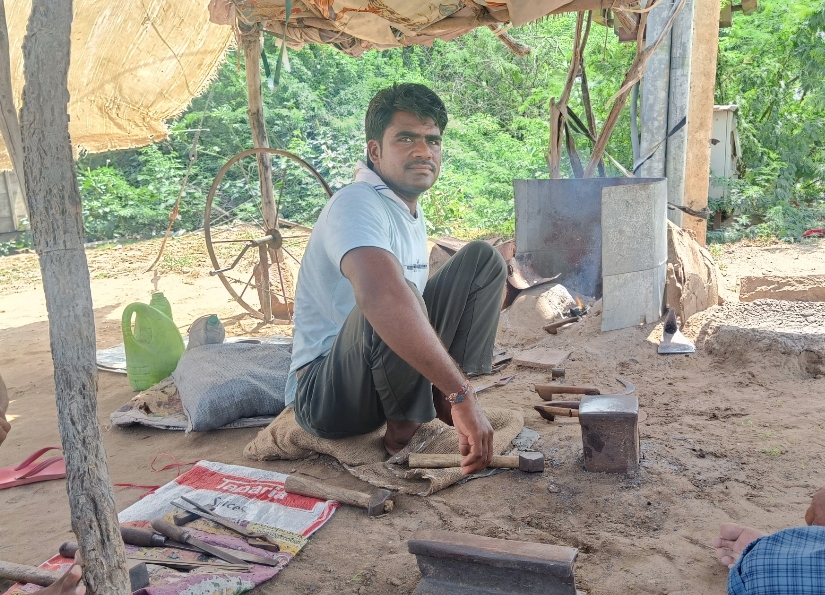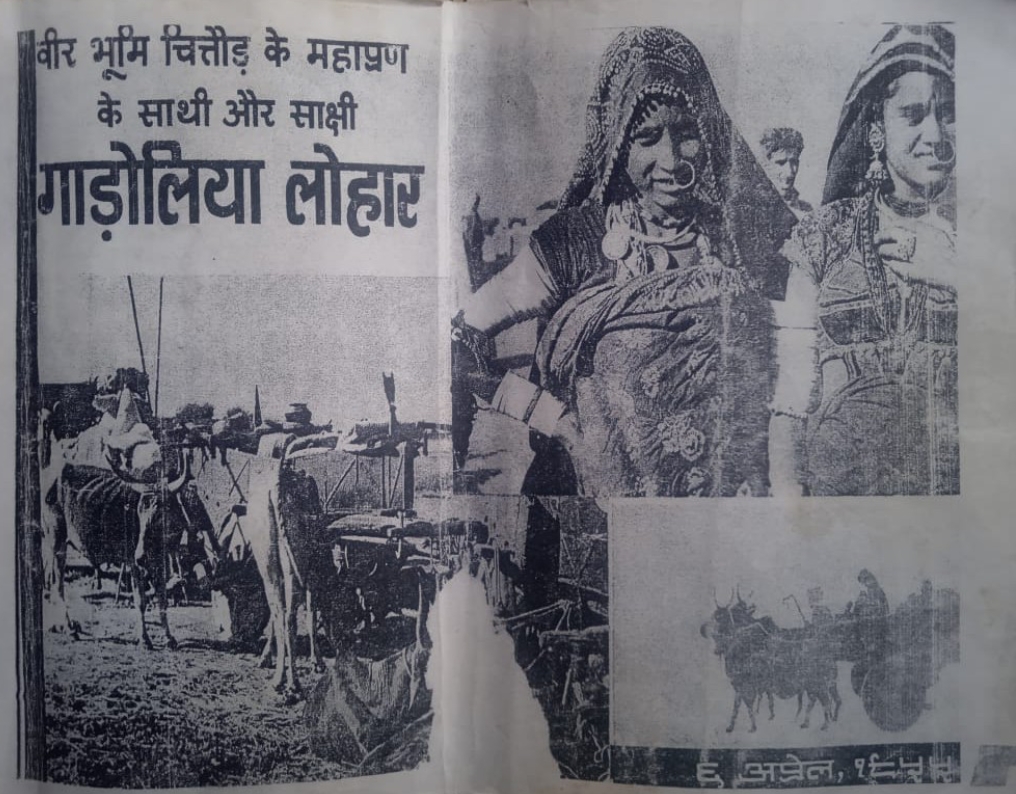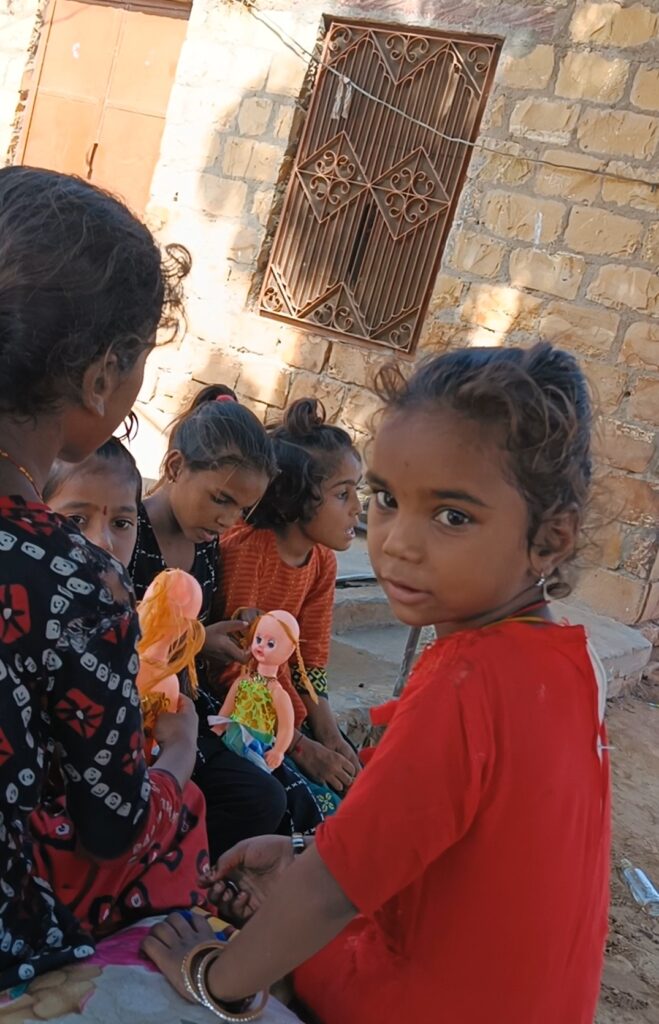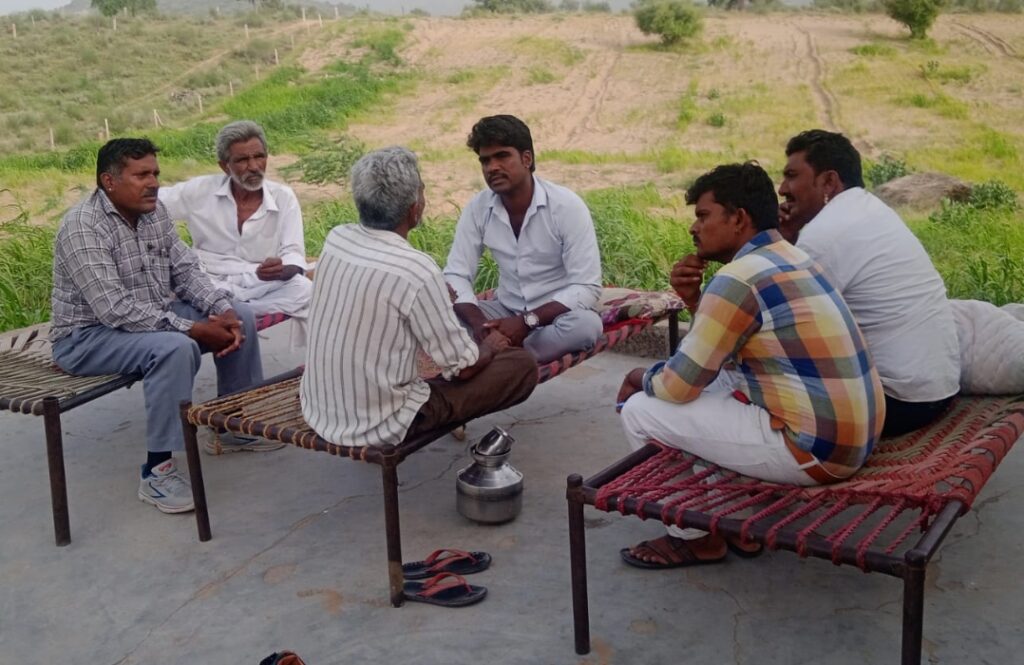How is the life of the blacksmith – Gadia lohar community people in India?
India, despite its progress since gaining independence, still grapples with deeply entrenched issues of casteism and the systematic suppression of backward communities. This is particularly evident in states like Rajasthan, where the shadows of caste-based discrimination loom large. From enduring the demeaning act of sitting on the ground before higher caste individuals to being forbidden from touching certain utensils, archaic practices persist in various forms.
During my extensive cycling journey across India, I gained first-hand insight into the plight of marginalized communities. It became evident that the barriers obstructing their growth and progress are profound. Among the many groups I encountered, the Gadia Lohar, originally blacksmiths tracing their lineage back to Maharana Pratap of Mewar in present-day southern Rajasthan, stood out with a unique and harrowing tale.
Centuries of suppression have left them at a point of almost no return, grappling with abject poverty and struggling to make ends meet. Conversations with Mr. Ram Lal near Shiv Taluk in Barmer district shed light on the harsh reality of their lives and the persistent oppression they endure. Education emerges as their only potential lifeline to escape the clutches of poverty. However, Mr. Ram said that this opportunity has been systematically denied to them, further entrenching their disadvantaged status even in modern times.

The story of Godia Lohar community
During my journey from Barmer to Jaisalmer, I encountered a remarkable young man at a humble roadside shop with a simple shed roof and a few tools for heating iron. He extended a warm invitation for tea, and I eagerly accepted the chance to learn more about him – a man who effortlessly conversed in English while diligently working on the streets. Mr. Ram Lal, the blacksmith, had a story that left a lasting imprint on my memory.
Proudly introducing himself, he identified as a member of the Gadia Lohar community—a group historically known for crafting swords and ammunition for Maharana Pratap, a revered figure during the Mughal invasion. Their tireless dedication in equipping their king to defend Chittorgarh, their homeland, was a testament to their commitment. Regrettably, as fate would have it, after Maharana Pratap’s demise and the fall of Chittorgarh to the Mughals, their community became scattered. They adapted to a nomadic life, dispersed across the country, and continued their craft as blacksmiths, creating tools such as sickles and bullock carts used in farms.
Mr. Ram Lal demonstrated an impressive knowledge of the Godia Lohar community, even displaying a digital copy of a book dedicated to their history. He shed light on the societal discrimination the community faces and shared a video discussing the privileges the community was supposed to receive during Jawaharlal Nehru’s regime. Unfortunately, due to political complexities, these promised policies never materialized, leaving the community to continue their struggle.
Previously categorized as Other Backward Classes (OBC), the community was later reclassified as Special Backward Classes (SBC), and currently, they hold the status of Most Backward Class (MBC). Despite these classifications, Mr. Ram emphasized that they receive minimal government support in terms of job opportunities and access to education. The persistent battle for recognition and assistance continues for the Godia Lohar community.

Childhood life of Godia Lohar community people
In this tight-knit community, women primarily assume the role of housewives and refrain from active participation in community work. Mr. Ram Lal shared details about his family, comprising five brothers and two sisters, with the sisters already married off. Presently, the five brothers, including Ram, live together with their father, all practicing the blacksmithing profession. Ram recalled his challenging journey, mentioning that he had to discontinue his education during the fifth grade due to financial constraints. At a young age, he and other children in similar circumstances began working to contribute to the family’s income. Ram’s childhood was marked by poverty and struggles, a reality that shaped his early years.
In an effort to supplement his family’s income, Ram sought odd jobs in Jaisalmer, merely 100 km away from his hometown. It was during this period that he discovered a fascination for history, particularly that of temples and deserts. Determined to leverage this interest into a source of income, Ram aspired to become a tour guide, delving into extensive research to enrich his knowledge. Notably, this journey also led him to master the English language, a skill he found invaluable while guiding numerous foreign visitors. As his passion for history deepened, so did his curiosity about his own ancestry, prompting him to delve into research about his roots.
Current day life of Godia Lohar community people
Discovering the book proved to be a turning point for Mr. Ram Lal. Not only did it shed light on the enduring suppression faced by his community throughout history, but it also elucidated the reasons behind their continued struggle. Armed with this newfound knowledge, he felt a resolute determination to be a catalyst for change within his community. Presently, he diligently operates a modest roadside shop, managing to earn a daily income ranging from 200 to 300 rupees—just enough to sustain his family.
Balancing the needs of his three children, with the eldest being an 11-year-old, proves to be a formidable challenge given his limited earnings. During my visit to their community, I observed a pervasive lack of awareness. The older generation firmly believed in toiling for their livelihood, while the younger members often missed out on regular school attendance, perpetuating a cycle of limited opportunities and awareness within the community.

When I inquired about Ram’s vision for utilizing the knowledge and exposure he had acquired, he expressed a strong desire for his children to secure prominent government positions. He emphasized rectifying the missed educational opportunities of his generation by ensuring a brighter future for his offspring. Looking at the broader perspective, Ram mentioned that their community had established a formal organization, of which he holds the position of divisional president, while Jagadish Chauhan serves as the president. He affirmed his determination to ardently advocate for their cause, striving to capture the attention of the central government and garner support for their community.

Mindset of a Godia Lohar Community Person
Mr. Ram’s account of the Godia Lohar community was deeply disheartening. Understanding the intricacies of living within this community was a somber realization. I seized the opportunity to delve into Ram’s mindset by asking him some personal questions.
Justification
When asked about his justification for the life he leads, Ram emphasized that his family takes precedence, followed by the community. He expressed a fervent desire to uplift his community and make a significant difference in their lives.
Validation
Inquiring about whose validation he seeks, Ram emphasized seeking validation primarily from his caste and then from his entire village. He yearns for them to witness and comprehend the passion within his heart.
Complaints
Ram articulated that his main grievances revolved around the prevailing prejudices against his community. The elevation of their caste would bring him profound peace of mind.
Materialism
When probed about how he would utilize a substantial monetary windfall, Ram envisioned using the funds to secure jobs and improve living standards for all individuals within his caste. His objective was to alleviate their collective suffering.
This was not the first instance where I encountered the plight of a community trapped in poverty, clinging to age-old professions for their livelihood. Another community enduring similar circumstances is the Manganiar community in Rajasthan. To read about them, you can visit this article.
I am a 31 year young PhD graduate who has decided to travel the length and breadth of India on my cycle, to document the journey of meeting a vast array of people. In my journey, I intend to understand the characteristic features of the people of this nation and categorize them based on their demographics, age, profession, gender, traditions, and cultural differences.
Sar aapko बहुत-बहुत dhanyvad aap hamare bich mein aaye aur hamari samasyaon ke bare mein jana aur aapane likha iske liye aapko कोटि-कोटि pranam 🙏🙏🙏